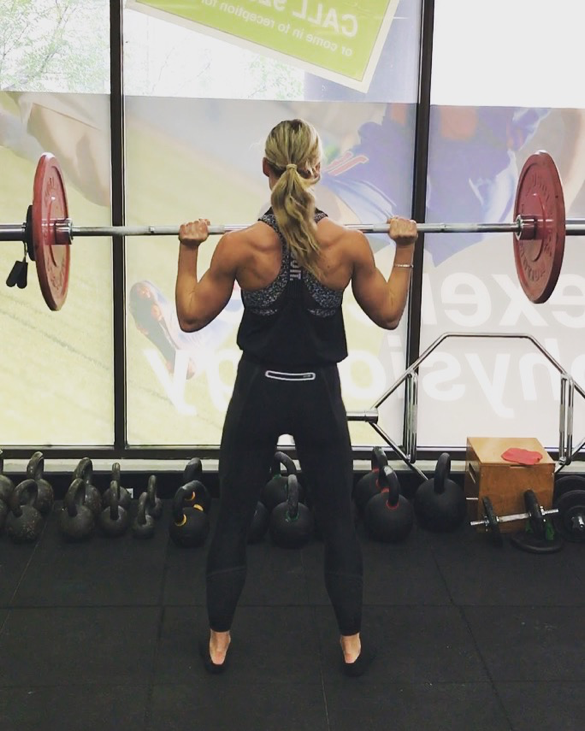One of the more welcome trends around mainstream gym use in recent times has been the closing gap in gender participation rates, and a rising surge of females moving towards strength training to support their aesthetic, athletic, and health endeavours.
While on the surface there don’t appear to be many training approach differences, we have sought to outline with this brief article some of the key gender specific considerations relating to training that perhaps may not be so well known.
1. There are no significant differences between genders until the onset of puberty
After puberty onset, there are changes in mass, structure, and tissue distribution. Males tend to carry more muscle mass, have greater bone mineral density and skeletal integrity, and females tend to carry greater relative amounts of adipose tissue (similar absolute amounts, spread across a smaller frame). Post puberty onset, there also appears to be a trend in females for quadriceps strength to increase relative to body mass while hamstring strength remains largely unchanged. This can lead to muscular imbalances, quadriceps dominance and relative weakness in the posterior chain.
2. Females have up to 9x times greater risk of non-contact ACL tears
Predisposing biomechanical factors such as wider pelvis (Q-angle) which increases rotational forces at the knee, greater quadriceps dominance, ligament laxity and generally lower physical strength exposes females to increased risk of non-contact ACL tears, and patellofemoral pain. A balanced strength and movement skill training programme has proven beneficial in reducing the risk of these common injuries.
3. Many of the primary differences in performance and metabolism are related to differences in size and body composition, rather than gender alone
Most of the true gender specific variances can be attributed to differences of muscle fibre type and sex hormone production.
4. Females and muscle growth
Testosterone is one of the primary hormones responsible for muscle growth, and post exercise repair. Both men and women produce the same hormones but differ in the amounts. Producing approximately 20 times less testosterone as males and higher amounts of estrogen, it is difficult for females to gain appreciable amounts of muscle mass.
5. Females have approximately 2/3 total muscle mass compared to males,
consisting of ½ upper body mass, ¾ lower body mass, and are on average 10% shorter. When factoring in total muscle mass per unit of height, a similar amount of total muscle mass would reduce relative strength (the measure of maximal strength in relation to body mass) level differences considerably between sexes.
6. Females benefit from similar resistance training responses as males
Although females tend to carry less muscle tissue, females can gain proportionally the same amount of strength and size as males in response to a resistance training programme, relative to mass. This means that females will gain the same percentage, of a smaller relative total mass.
7. Females tend to exhibit better metabolic health.
Despite having 2/3 muscle mass, twice the amount of fat mass as males and typically slower metabolisms, females tend to exhibit better metabolic health, specifically:
– Elevated fasting blood glucose rates are lower
– Whole body blood glucose clearance is faster
– Faster rate of glucose uptake into muscle
The hormone Estrogen is also thought to play a role in the healthier metabolic profile of females, linked to improved glucose usage.
8. Females exhibit a lower inflammatory response to resistance training
and will sustain less muscle damage than males in response to a sufficient overload stimulus. This may be one of the contributing factors to lower muscle hypertrophy levels in comparison to the training response seen in males.
9. Females are less suited for explosiveness, but are more fatigue resistant, and recover faster between bouts of effort
Females have slower muscle contractile capabilities, due to a lower concentration of Type II muscle fibres compared to males, and a lower storage capacity for anaerobic substrates and enzymes. Females however do have a higher proportion of fatigue-resistant Type I muscle fibres, and a greater capillary density, making women more suited for oxidative efficiency or aerobic work, and sustained lower-intensity muscular work. This means that overall, females tend to be less capable for short bursts of high-intensity effort, and more suited to sustained sub-maximal efforts.
Note: While females may have a lower anaerobic efficiency than males, anaerobic pathways incur a greater metabolic cost, producing more metabolic waste and fatigue. Females also metabolize a greater proportion of fat for energy at any given exercise intensity and rely less on glycogen stores, all of which contributes to females being less fatiguable.
Takeaway training considerations for females:
-Many of the main gender differences revolve around fibre type and sex hormones.
-Certain biomechanical factors can expose females to greater risk of non-contact knee injuries.
-Have similar relative strength as males, and respond similarly to resistance training.
-Have lower absolute strength and power, lower relative power.
-Do not hypertrophy to the same extent as males.
-Are less suited for short explosive bursts of activity, and more suited to sustained sub-maximal efforts or volume.
-Have greater work capacity, have better recovery after bouts of effort and sustain less muscle damage.
-Have better metabolic health: Greater insulin sensitivity, and utilise more fat for energy at any given exercise intensity (also contributing to females being less fatiguable).
Have you heard about HERo, our Women’s Strength and Conditioning Group?
HERo is a group training program dedicated specifically to meet the exercise needs of active women & female athletes.
Contact Sophie, at info@centralperformance.com.au
 Danny James is the Head of Personal Training and Strength and Conditioning services at Central Physio and Performance Fitness, located in Surry Hills in the Sydney CBD area. info@centralperformance.com.au
Danny James is the Head of Personal Training and Strength and Conditioning services at Central Physio and Performance Fitness, located in Surry Hills in the Sydney CBD area. info@centralperformance.com.au
References and further reading:
Gender differences in strength
Upper to lower body muscular strength and endurance ratios for women and men
Sex differences in strength and fatigability
Muscle size responses to strength training in young and older men and women
Response to resistance training in young women and men
Sex differences in muscle strength in equally-trained men and women
Age and sex effects on energy expenditure
Comparison of upper body strength gains between men and women after 10 weeks of resistance training
Endocrine profiles in 693 elite athletes in the postcompetition setting
Direct and indirect effects of leptin on adipocyte metabolism
Gender differences in muscle inflammation after eccentric exercise
Variability in muscle size and strength gain after unilateral resistance training
Gender differences in strength and muscle fibre characteristics
Sex differences in exercise metabolism and the role of 17-beta estradiol
Gender difference in circulating leptin level and leptin sensitivity
Age and gender comparisons of muscle strength in 654 women and men aged 20–93 yr
Males have larger skeletal size and bone mass than females, despite comparable body size
Physical exercise and menstrual cycle alterations. What are the mechanisms?
Effects of menstrual cycle phase on athletic performance



